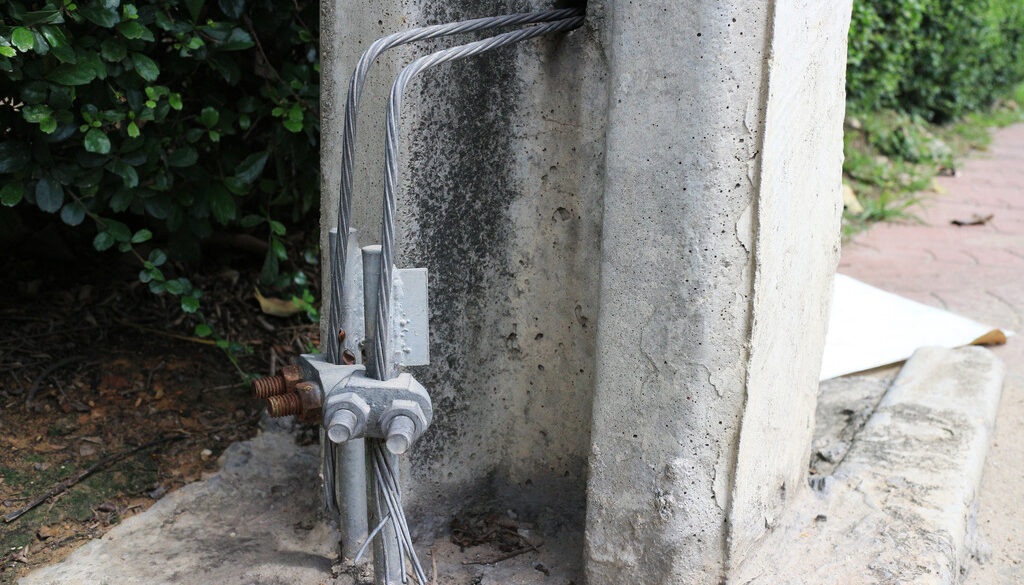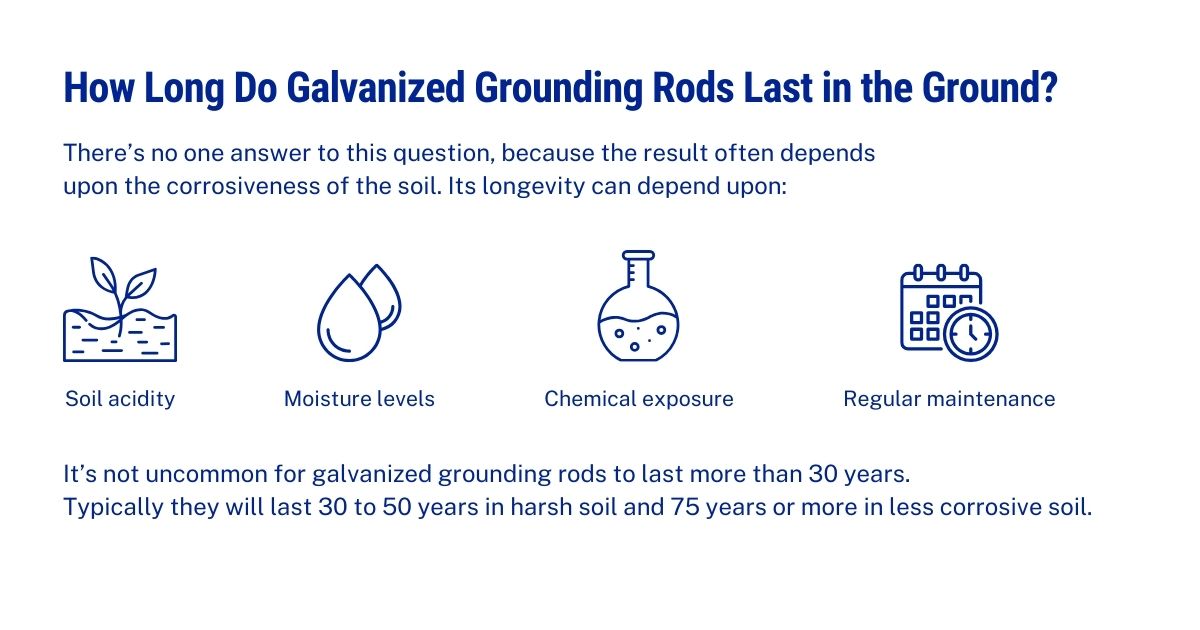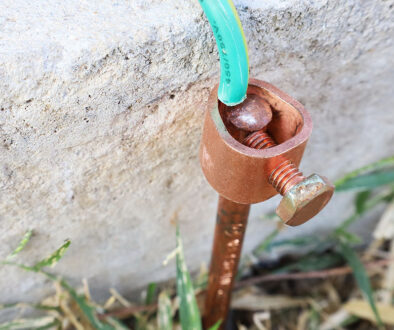We Bust These 3 Popular Galvanized Grounding Myths
Grounding is a critical aspect of electrical systems that ensures safety and protects against electrical faults. One commonly used material for grounding is galvanized steel. However, there are several galvanized grounding myths that can lead to misconceptions and potential hazards.
We’re going to debunk three popular galvanized grounding myths, providing you with accurate information to make informed decisions about electrical safety.
Common Galvanized Grounding Myths
Myth 1: Galvanized steel is not an effective conductor for grounding
Can you use galvanized steel for grounding? This is one of the popular galvanized grounding myths.
One prevailing myth suggests that galvanized steel is not an efficient conductor for grounding purposes. This misconception likely stems from the fact that pure copper has a higher electrical conductivity than galvanized steel. While it is true that copper is an excellent conductor, galvanized steel can still be an effective choice for grounding.
Galvanized steel refers to steel coated with a layer of zinc to protect against corrosion. When properly installed, galvanized steel can:
- Provide a product that can stand the test of time
- Establish a reliable electrical connection between the grounded system and the earth
- Offer solid conductivity
- Provide excellent corrosion resistance
In fact, galvanized grounding rods are commonly used in a variety of electrical applications, including residential, commercial, and industrial settings. They have proven to be a cost-effective and durable solution, effectively dissipating electrical energy and ensuring electrical safety.
So consider that galvanized grounding myth busted!
Myth 2: Galvanized grounding is not suitable for high-resistance grounding systems
Another misconception and galvanized grounding myth that circulates is that galvanized grounding rods are not suitable for high-resistance grounding systems.
High-resistance grounding refers to a method where a resistor is connected between the neutral point of a power system and the grounding electrode. This setup limits the fault current to a low level and prevents damage to the electrical equipment.
Contrary to the galvanized grounding myths, galvanized grounding rods can be successfully incorporated into high-resistance grounding systems. The zinc coating on the galvanized steel rods provides an effective resistive path. By selecting the appropriate resistance value for the grounding resistor, you can control the fault current to the desired level, irrespective of the grounding material.
It is important to consult with a qualified electrical engineer or a professional familiar with high-resistance grounding systems to ensure proper design and installation. They can help determine the appropriate grounding resistor value and the necessary galvanized grounding components to achieve optimal system performance and safety.
Myth 3: Galvanized grounding is not suitable for lightning protection
Lightning strikes pose a significant risk to electrical systems and can cause severe damage if not properly protected. Some people believe that galvanized grounding rods are not effective for lightning protection, assuming that only specific materials, such as copper or aluminum, are suitable for this purpose. However, this is just another one of the galvanized grounding myths.
Galvanized grounding rods can indeed be used effectively in lightning protection systems. The primary objective of a lightning protection system is to provide a low-impedance path for the lightning current to safely discharge into the ground. Galvanized steel grounding rods, with zinc coating, offers corrosion resistance and conductivity required for this purpose.
When designing a lightning protection system that includes galvanized grounding rods, certain factors must be considered. These include:
- The height of the structure
- The location of the structure
- The local lightning strike density
- Specific requirements outlined in guidelines
Proper installation techniques, such as bonding conductors and appropriate grounding connections, are crucial for ensuring the effectiveness of galvanized grounding rods in a lightning protection system. Consulting with lightning protection specialists or qualified electricians experienced in this field is recommended to design and install a robust and reliable lightning protection system that incorporates galvanized grounding rods.
By debunking this myth, we emphasize that galvanized grounding rods can play an essential role in safeguarding structures and electrical systems against the damaging effects of lightning strikes. It offers a cost-effective and durable solution, provided that it is integrated correctly into a comprehensive lightning protection strategy.
Don’t Fall for These Galvanized Grounding Myths: Trust Your Job to the Experts at South Atlantic
Understanding the facts and dispelling galvanized grounding myths is essential when it comes to electrical safety, especially regarding galvanized grounding rods. By debunking these popular myths, we have shed light on the effectiveness of galvanized steel grounding rods as:
- Conductors for grounding purposes
- Products that are compatible with high-resistance grounding systems
- Effective products for lightning protection
When implemented correctly and maintained properly, galvanized grounding rods can provide a reliable and durable solution for electrical safety. As always, it is crucial to consult with professionals and adhere to applicable electrical codes and standards when designing, installing, and maintaining any grounding system. By doing so, you can ensure a safe and efficient electrical infrastructure that protects both people and property.
Need Help With Grounding Projects? South Atlantic Has You Covered
Experience the difference for yourself: Not only do we exceed industry standards for all our grounding rods, we also have all the technical specifications and expertise to help ensure you have the product you need.
We’ve also earned a reputation for excellence in any accessories used in platforms, pipe supports and other items for the utility industry.
Get started and see the many ways we’ve got you covered. Contact us today.





